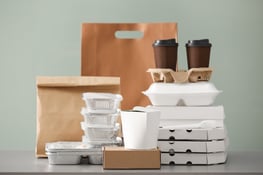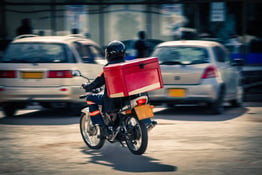If you run a restaurant, you probably think you know your guests pretty well. What they like. Why they order. What they care about.
But when the folks at Owner.com surveyed over 5,000 restaurant guests across the U.S., they found a few things that surprised even them. The restaurant guest data they uncovered can help you go beyond guesswork and understand what guests actually do — not just what we assume they do.
Some of what came up in the survey results confirmed things you might expect, but a lot of it challenged common assumptions. I spoke with Adam Guild, CEO of Owner.com, who shared seven surprising (and sometimes counterintuitive) behaviors by restaurant guests.
1. Guests Find New Restaurants on Google — Not Apps
When someone is hungry and looking for something new, where do they go? The survey asked over 1,300 guests. Two thirds of them — 66% of guests — said they use Google to discover new restaurants. Not food delivery apps. Not Yelp. Not TikTok.
“Google is still the king of restaurant discovery,” Guild says. “Owner’s reviews and even performance data show that most restaurants grow new direct orders through [online searches]. And yet, most restaurants don't treat their website or search presence like it’s a top priority.”
Why this matters: If your restaurant doesn't appear in Google search results — or worse, if your website sends people off to another platform — you're losing new customers before they even get to your menu.
What You Can Do:
- Make sure guests can easily order on your website
- Add descriptive, keyword-rich content to your homepage and menu pages
- Use terms that people might search for, like "best ramen in Santa Clara" or "vegan tacos near me"
- Update your Google Business Profile with photos and your ordering link
Google rewards websites that keep users on-site and let them complete an action, like placing an order. “If your site sends people to a third-party ordering or delivery app, it tells Google your page wasn't helpful,” Guild says. “And that hurts your search visibility, so even fewer people will find your website in the future.”
2. Guests Use Third-Party Apps To Reorder — Not To Discover
Third-party apps such as DoorDash and Uber Eats position themselves as discovery platforms. But Owner’s restaurant guest data paints a different picture. Actually, fewer than half of guests — only four guests out of ten — said they use third-party apps to reorder from restaurants they already know, and only one in ten said they use them to find new places.
“Most of the time, these apps are just helping guests repeat an existing habit — not explore new restaurants,” Guild points out.
Why this matters: For one thing, you're not gaining new customers through the apps. Even worse, you take a financial hit when current customers use an app. “When they reorder through the app, guests who already love your food are coming back through the most expensive channel possible,” Guild says. “You're paying a 15% to 30% commission for orders you could have owned.”
What you can do:
- After a guest orders on a third-party app, offer them an incentive (like a discount, loyalty points, or a free item) if they order directly next time
- Use in-bag flyers, signage, and social posts to promote ordering directly through your website and app
- Let guests save their info and favorite orders to make reordering easier
3. Guests will download your app if it helps them reorder faster
The survey asked guests, “Would you download a mobile app from your favorite independent restaurant?,” and 93% said yes. Even better: 83% said reordering is easier through a mobile app than through a website. And 69% of guests said simply having a mobile app made them more likely to reorder.
Why this matters: Many owners assume apps are only useful for big chains. But restaurant customer trends make it clear people want fast, easy, repeatable ordering — especially if they order from you two or more times a month.
What you can do:
- Get an app that mirrors what third-party apps do well: fast checkout, saved orders, delivery tracking
- Offer app-exclusive rewards or deals
- Let guests save favorites, reorder with one tap, and earn loyalty points automatically
“Our data shows that guests who use a restaurant's mobile app reorder 85% more often than guests who don't,” Guild says. “This is a significant number.”
4. A bad website is silently killing your sales
Three out of four guests said they've abandoned a restaurant order because the website or online ordering system was frustrating.
“That means your menu could be perfect, your food could be amazing. But if the website is clunky? You lose the order,” Guild says. “Even dine-in guests care — 72% of guests said they check a restaurant's website before visiting in person.”
Why this matters: Your website is your first impression — and maybe your only one.
What you can do:
- On your website’s home page, lead with a headline that communicates your brand instantly: "Handmade Neapolitan pizza, straight from Naples to Denver"
- Add high-quality photos of your best dishes
- Keep the design simple and focused on browsing and ordering
- Show reviews or star ratings under key menu items
- Offer Apple Pay or other fast checkout options
“We've seen restaurants increase conversion rates from 2% to over 15% just by making their website more intuitive and easy to use,” Guild says.
5. Guests prefer small, frequent rewards over big ones
Loyalty programs are an effective restaurant customer trend — but some programs are more effective than others.
More than half (57%) of guests say they want smaller rewards they can earn more often. Most expect to earn a reward after just one to three orders — not ten or more. In fact, 36% said earning rewards quickly is the number one reason they stay engaged.
Why this matters: Loyalty only works if it builds momentum. Guests lose interest if rewards feel out of reach.
What you can do:
- Use a points-based system that rewards guests every few orders
- Offer small items like a free side or dessert to keep margins strong
- Show customer progress visibly on your website or app
“Psychologists call this the ‘endowed progress effect,’ ” Guild says. “That just means that when people feel like they're making progress, they stick with the program.”
6. The biggest loyalty challenge? Guests forget to use rewards
Four out of ten guests said the biggest challenge with rewards programs is forgetting to use their rewards. Not a bad experience. Not too little value. Just... forgetfulness.
Why this matters: Loyalty programs keep customers coming back regularly, first to rack up points, then to cash in their reward. If they forget about their reward, they forget about you.
What you can do:
- Show reward status during checkout
- Send reminders when guests are close to earning their next reward
- Automatically apply rewards at checkout
“Don't make your guests do the work,” Guild says. “Reward reminders and progress tracking increase redemptions — and repeat orders.”
7. Nearly half of your guests will pick up food if it saves money
Delivery is convenient, but it's not free. And people understand that, so 48% of guests said they'd choose pickup over third-party delivery if it meant paying less.
Why this matters: Guests are more price-sensitive than you might think, and many are willing to trade convenience for value.
What you can do:
- Offer a small discount or loyalty points for pickup orders
- Make pickup fast and convenient with clear instructions and signage
- Position pickup as the best value in your ordering experience
You can even use order thresholds strategically. For example, offer reduced delivery fees ($4 instead of $8) for orders over $30, or waive delivery fees entirely for larger orders. “Restaurants that implement smart pricing see higher average order values and more completed purchases,” Guild says.
The data speaks for itself
Guest behavior isn't random — it's predictable when you know what to look for. Owner’s restaurant guest data reveals a clear pattern: Guests want convenience and value on their terms, not yours.
The gap between what guests want and what many restaurants provide creates an opportunity. By focusing on these seven insights, you can meet guests where they are — not where third-party platforms want them to be. After all, understanding your guests isn't just good hospitality, it's good business.
Learn how you can use these insights to use your ordering system, website, or loyalty program to drive success. Find out how in a consultation with a Back of House expert.





